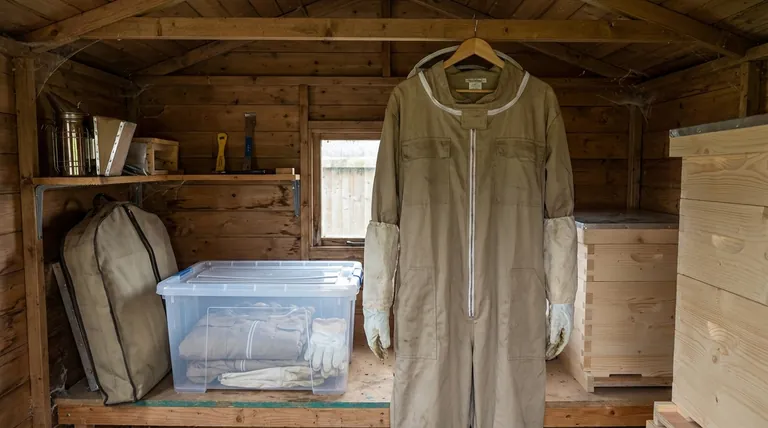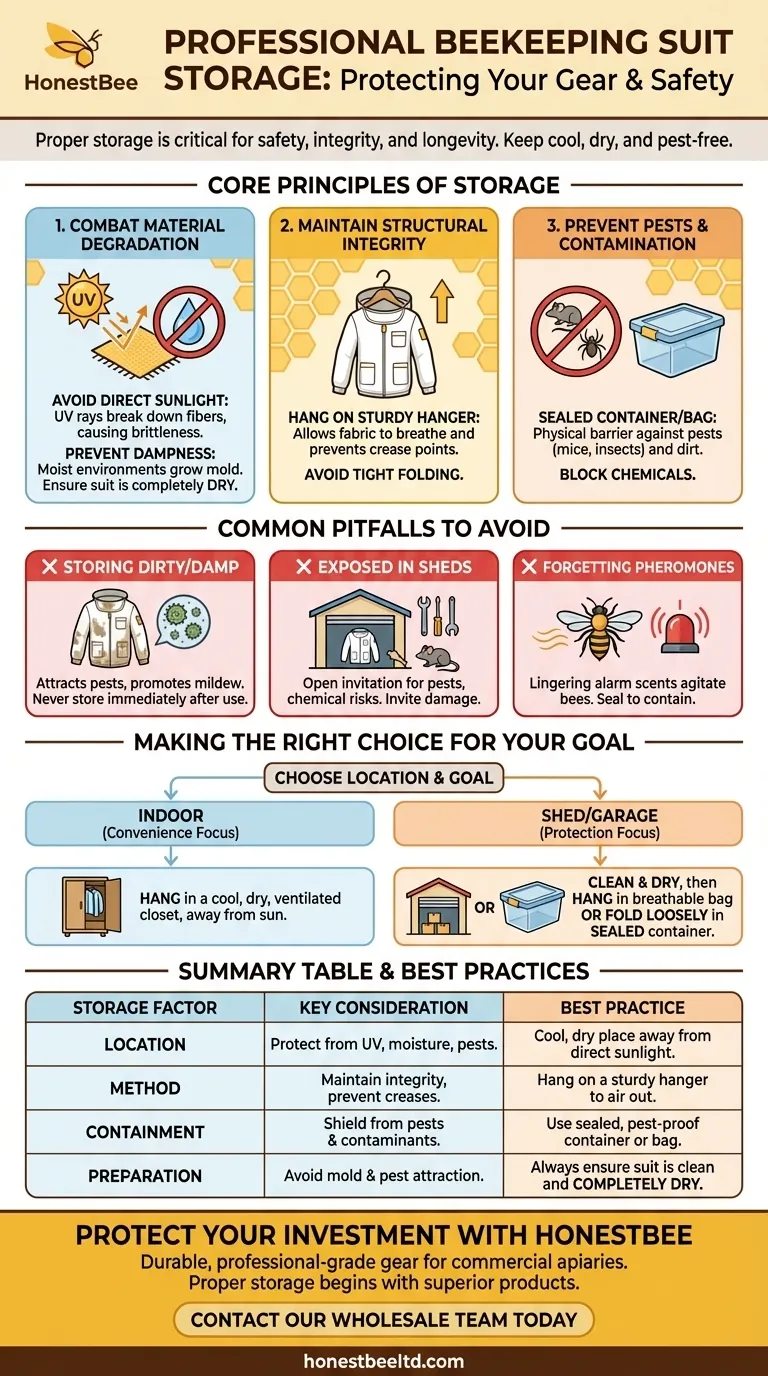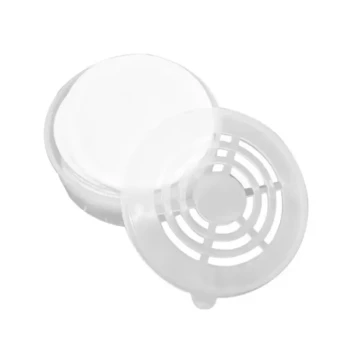To properly store a beekeeping suit, you must keep it in a cool, dry place away from direct sunlight and pests. The best practice is to hang the suit on a hanger to help it air out and prevent creases, and if storing it in a shed or garage, place it inside a sealed, pest-proof container or bag.
Storing your beekeeping suit is not just about tidiness; it is a critical safety procedure. Proper storage directly impacts the suit's protective integrity, longevity, and readiness for your next hive inspection.

The Core Principles of Proper Suit Storage
Understanding why certain storage methods are recommended is key to preserving your most important piece of protective equipment. Each step is designed to combat a specific threat to the suit's material and your safety.
Combat Material Degradation
Your suit's fabric is its primary line of defense. It must be protected from environmental factors that can weaken it over time.
Constant exposure to direct sunlight will cause the fabric's fibers to break down due to UV radiation, making it brittle and more susceptible to tears and stings.
Storing a suit in a damp or humid environment encourages the growth of mold and mildew. This not only damages the fabric but can also pose a health risk to you. Always ensure the suit is completely dry before storage.
Maintain Structural Integrity
How you physically position the suit during storage matters. Folding it tightly for long periods can create deep creases that become weak points in the fabric.
Hanging the suit on a sturdy hanger is the ideal method. This allows the fabric to breathe, helps any residual moisture evaporate, and prevents the formation of permanent wrinkles that could compromise its integrity.
Prevent Contamination and Pests
A shed, garage, or barn is a common storage location, but it also introduces risks from pests and debris.
Mice, spiders, and other insects can chew holes in the fabric or take up residence inside, leading to a nasty surprise. Storing the suit in a sealed plastic tote or a heavy-duty garment bag creates a physical barrier.
This practice also protects the suit from accumulating dust, dirt, and other debris that can soil the material and potentially introduce contaminants into your hives.
Common Pitfalls to Avoid
Mistakes in storage can render a suit ineffective or unsafe. Being aware of these common errors is as important as knowing the correct procedures.
Storing a Dirty or Damp Suit
Never store your suit immediately after use without cleaning and drying it. Sweat, nectar, and propolis residue will attract pests and promote mildew growth.
A damp suit sealed in a container is a perfect breeding ground for mold, which can permanently stain and weaken the fabric.
Leaving it Exposed in a High-Traffic Area
Storing an unsealed suit in a garage or shed is an open invitation for pests. A small hole chewed by a mouse is all it takes to create an entry point for a bee.
It also risks contamination from chemicals, oils, or other materials commonly found in these workspaces.
Forgetting About Pheromones
Bees release alarm pheromones when they sting, and this scent can linger on your suit. Storing the suit in an open area near your apiary could potentially agitate or attract bees.
Keeping the suit in a sealed container helps contain these pheromones, ensuring the area remains calm.
Making the Right Choice for Your Goal
Your storage strategy should be adapted to your environment to ensure your suit remains a reliable piece of safety equipment.
- If your primary focus is convenience and you store it indoors: Hang the suit in a closet on a sturdy hanger, ensuring it's away from direct sunlight and in a dry, well-ventilated space.
- If your primary focus is protection in a shed or garage: Hang the suit inside a breathable garment bag or place it loosely folded inside a sealed plastic container after it has been cleaned and thoroughly dried.
Properly caring for your bee suit is a fundamental part of responsible and safe beekeeping.
Summary Table:
| Storage Factor | Key Consideration | Best Practice |
|---|---|---|
| Location | Protect from UV rays, moisture, and pests. | Store in a cool, dry place away from direct sunlight. |
| Method | Maintain fabric integrity and prevent creases. | Hang on a sturdy hanger to allow the suit to air out. |
| Containment | Shield from pests and contaminants in sheds/garages. | Use a sealed, pest-proof container or heavy-duty garment bag. |
| Preparation | Avoid mold and pest attraction. | Always ensure the suit is clean and completely dry before storage. |
Protect Your Investment with Professional-Grade Beekeeping Supplies
Your safety and the longevity of your equipment are paramount. At HONESTBEE, we supply durable, high-quality beekeeping suits and protective gear designed for the demands of commercial apiaries and distributors. Proper storage is the final step in a lifecycle that begins with superior products.
Let us help you equip your operation with gear that's built to last. Contact our wholesale team today to discuss your needs and discover the HONESTBEE difference.
Visual Guide

Related Products
- Wholesales Dadant Size Wooden Bee Hives for Beekeeping
- Yellow Plastic Bucket Pail Perch for Beekeeping
- Professional Insulated Plastic Bee Hives
- Long Langstroth Style Horizontal Top Bar Hive for Wholesale
- Professional Insulated Winter Hive Wrap for Beekeeping
People Also Ask
- What are the advantages of wooden bee hives? Superior Bee Health & Beekeeper Flexibility
- What is the best place to keep bees? Find the Perfect Apiary Site for Your Hives
- What types of products are available for beekeeping needs? Essential Equipment for Apiaries & Distributors
- How often should the area under beehives be inspected and cleaned during the warm season? A Proactive Maintenance Guide
- What are the essential pieces of equipment for most beekeepers? Get Started with the Right Gear



















